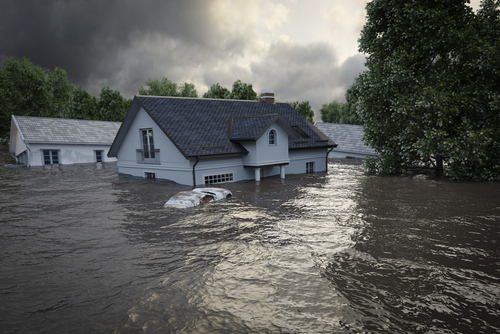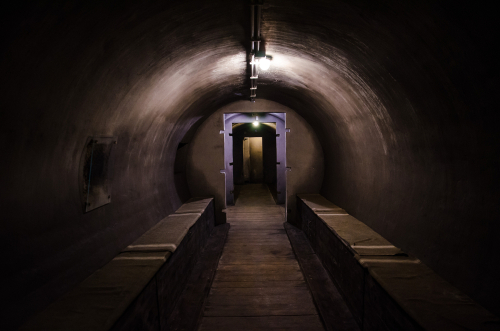Most Americans spend more than ten hours per day at their workplace.
We spend a lot of time to improve our skills and become more productive, but we take no protection measures when it comes to our job.
What would you do if the proverbial brown stuff hits the fan, and you are stuck at work?
Since your place of work plays an important role in your survival regardless if you plan to bug out or bug in, it makes sense to have a backup plan.
3 Second SEAL Test Will Tell You If You’ll Survive A SHTF Situation
Every day, there are real threats that we could face, and we should be realistic about our preparedness plan. I’m not talking here about an apocalyptic scenario like the ones the media is portraying. There are short term natural disasters and even social disobedience that can cause a lot of trouble for the working man or woman if they are not prepared.
Did you ever stop and think about your workplace survival?
Have you any idea what threats you might have to face at your workplace?
Most people know quite a lot about their coworkers, their habits, hobbies, and whatnot. However, Bill annoying you constantly with his fishing trips isn’t a life-threatening situation. Sure, he may bore you to death or kill you with his halitosis, but rather than figuring out ways to avoid him, you should invest some time into analyzing, mitigating, and prepare for real threats that you may one day face.
It is not easy for most people to figure out what could go wrong at their job, and few have the ability to analyze their work environment with a methodical mind, especially if that place is very familiar and if they worked there their entire life.
To come to the aid of those spending a lot of time at work, there are two distinctions they need to make when it comes to threats in their workplace. Consider the following when assessing your work environment.
Natural threats
Here we can include events such as floods, earthquakes, storm blizzard, and wildfires. These usually follow the same pattern, and preparations are usually common for all of the above. Look at the real and most common natural threats and do a threat analysis to figure out when they last happened and gather all the data that show occurring patterns.
As a quick example, if you live and work in a forested area, the probability of a wildfire occurring is much higher than let’s say, a tsunami. If you work in a luxurious resort in Hawaii, a blizzard should be a minimal risk, but an erupting volcano can, and should be, on top of your list when making a threat assessment.
Each and every natural disaster you can think of is specific and relevant to a certain area, and you should have a realistic preparedness plan for the threats that are most common in your area. Even more, your workplace should have specific protocols implemented in case a natural disaster occurs.
If you are new there, speak with someone that has worked and lived in that area for a long time, and they should be able to provide precise information about the safety of your workspace. They know the history, and by hearing the stories and learning from the lessons of your predecessors, you can be better prepared.
Manmade threats
This is the most complex category, and it can affect your security and physical integrity at your workplace in various ways. Even more, the “randomness factor” plays an important role here. To keep things short, you should be aware of the two main categories of risk: internal and external ones.
For internal risks, here we can include all types of scenarios that include an active killer or an unhappy employee that can cause havoc. Anything from arson, to deliberate power outages and even coworkers shooting up the place, should be considered. Even something like this is unlikely to happen; you never know when Bill might lose his cool about people making fun of his “halitosis” situation and might start hurting people or even worse.
Additionally, when it comes to internal threats, not only Bill and your other coworkers could become a problem, but also people related to them. Let’s say Jane has a jealous spouse, and her partner decides to come down to the office to settle some personal scores or remove people that he considers being a threat to his marriage. This will create ramifications for everyone in the workspace, and it can lead to tragedies if firearms are involved.
For external risks, here we have the human factor outside the employ of your workspace. Even an angry customer can turn into a real threat if given the opportunity or the “right motivation.” Let’s say you work for a government or private organization that handles large sums of money or has the ability to affect (negatively) the lives of strangers in major ways. In such cases, you could be looking at high-risk scenarios.
The problem with the human factor is its high unpredictability, and nowadays, people can easily “snap” after being pushed or bullied. However, a good outcome is that some of them have the tendency of advertising or broadcasting their intentions through direct (telling friends or family) or indirect interaction (posting on social media). This is mainly a call for help, and at the same time, it’s a clue that if spotted in time, well allow you to call for aid and dodge the bullet.
How should you handle these threats?
One of the first things that everyone should consider at their workplace is mitigation. Being able to understand the high-probability risks you could one day face will enable you to act upon them. Also, creating a trust-worthy culture and rewarding behaviors that improve the safekeeping of everyone at the workplace is the first step.
Managers and leads should discuss what people should do in case there’s an office fire, or they have to face an active shooter. This plays an important role in making everyone understand that security is mainly their own responsibility, and everyone can (and should) work together to keep their workplace a safe environment.
“If you see something, say something” also applies to your workplace and improves the awareness, but also empowers your coworkers. If you notice there’s a lack of medical aid supplies in your office, tell your management. That action alone should raise awareness regarding the risks this issue may cause, and will help people understand how much their safety is worth in the eyes of the company/management.
Evacuation
While this is pretty explanatory in itself, evacuation procedures seem to be delayed and are not practiced as often as they should. There’s the need for such drills at least two times a year, and every employee should be capable of understanding what is requested from them in case there’s an emergency and where are the emergency exits.
Even more, in case some emergency exits are considered security exceptions and can be accessed by certain personnel or access cards, they should know who to call or how to obtain those cards.
Your workplace needs to have meeting points established long before a crisis occurs, and everyone should be able to reach those points safely and as fast as possible. This helps greatly in case someone is missing and provides the needed time to communicate with a supervisor or the first responder teams. If you make it out, don’t forget about your coworkers. Even if people don’t like Bill, there may be things only you know about him, and that information will help the first responders find him faster.
One thing that needs to be stressed when an evacuation procedure takes place is to make sure you have your get home bag in reach and manage to evacuate with it. This item may be critical for you in case you have to travel long distances to and from your workspace.
Sheltering in place
When certain natural disasters occur, sheltering in place may be your only option for survival. Staying inside will minimize risk from external threats such as tornadoes or hail storms. Even so, there should be a dedicated space assigned for sheltering in, some space that is clear of glass windows and another potential, unnoticeable at first, hazards (high shelves, decorative art, etc.).
One thing to keep in mind is that if a place for sheltering in place is established, there should be enough room to accommodate everyone and enough resources to go around. The last thing you want is having your coworkers turn on you because you have stashed some water and snacks, and there weren’t enough to go around.
Active killers
This threat requires a dedicated section since terrorist attacks, active shooters, and rioters/looters are present now more than ever. Surviving an active shooter scenario requires proper survival knowledge, and people should learn how to respond to such a situation when it takes place.
This is a complex subject that depends a lot on the layout of your office, population density, and survival knowledge. However, we can sum it up and draw the following major actions to be followed:
- Pinpoint the danger zones and the number of shooters
- Decide to evacuate or shelter in place (barricade, hide, etc.), based on the information you have obtained
- Decide if you can and should help others, depending on various developing factors. Sometimes the only thing you can do is to save yourself.
The law enforcement agencies recommend running, hide, and fight, but as you can imagine, that’s not as easy as it sounds. If you have nowhere to run and your hiding options are limited or non-existent, you should at least be able to improvise before putting up a fight.
You should know the workplace better than everyone else, and you should be able to set the battleground to your advantage. Arm yourself with and use everything available to make it out alive
Concluding
Surviving when stuck at work can be difficult, and in most cases, it depends on making the right decisions in a split second. Creating a trust-worthy relationship and a collaborative culture has nothing to do with your survival rate. In most cases, when it hits the fan, it will be everyone for himself.
In certain cases, you may take the lead role and try to save everyone, or you may decide to leave your coworkers behind and save yourself. However, before ending up and making that critical decision, discuss with your management about emergency preparedness, and study your work environment. Any effort you spend now will save you a lot of time during a real emergency, and you may circumvent having to take some decisions that are hard to live with.














